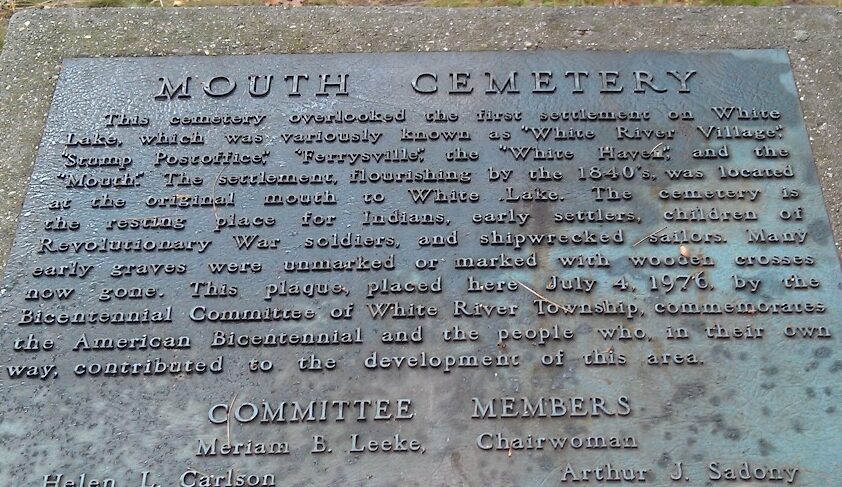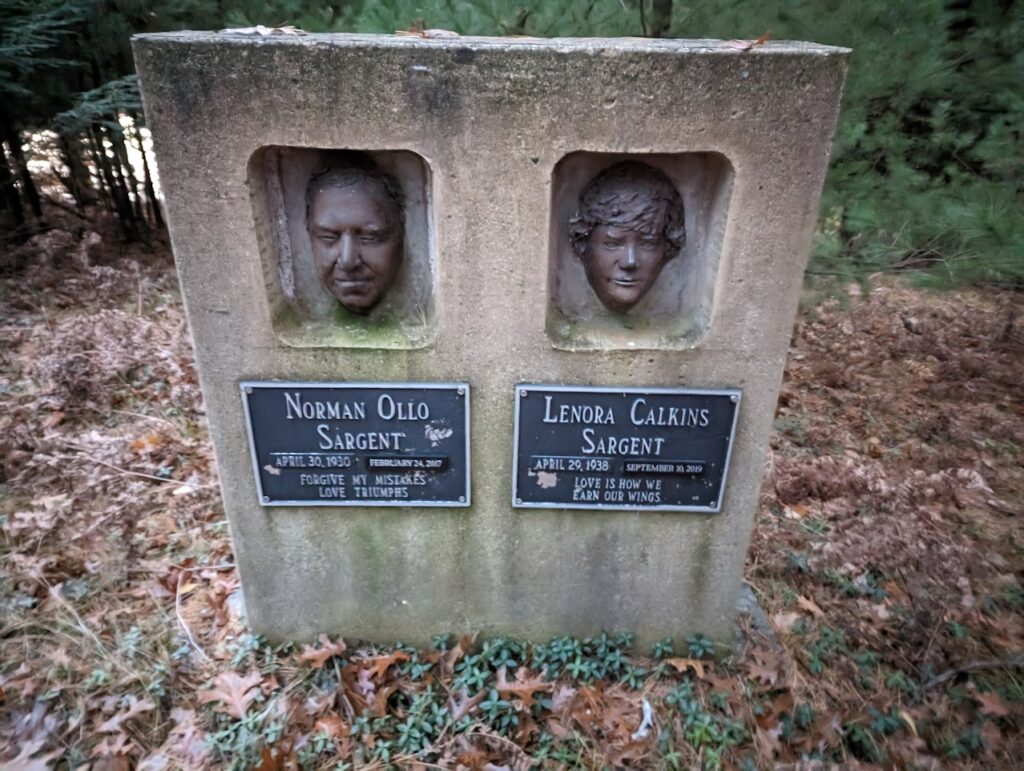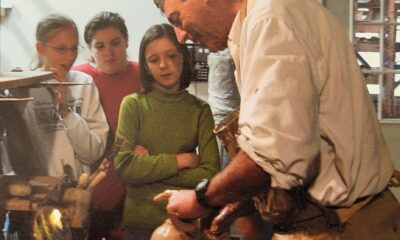
Nestled in the serene landscapes of Montague, Michigan, Mouth Cemetery stands as a testament to the town’s rich history and enduring legacy. Established in the mid-19th century, this quaint cemetery offers a glimpse into the lives of the early settlers and the development of the surrounding area.
Early Beginnings
Mouth Cemetery, named after its proximity to the mouth of the White River, was established in 1851. The cemetery’s origins are closely tied to the founding families of Montague, who sought a peaceful resting place for their loved ones. The earliest verifiable grave is that of Sarah Jane Beatrice, who died on February 28, 1851. However, the oldest person to be buried here was Quis-Mo-Squa, born in 1787 and died on December 12, 1897, at 110 years old. Unfortunately, records from 1848 to 1859 are missing, making the first burial unknown.

Historical Significance
Mouth Cemetery is not only the oldest cemetery in Muskegon County but also home to around 300 graves. It reflects the diverse and vibrant history of Montague. Among the interred are Civil War veterans, prominent local figures, and families who were instrumental in the town’s growth. The headstones, crafted from materials like marble and granite, bear intricate carvings and epitaphs that offer a poignant glimpse into the past.
One of the most popular graves belongs to Captain William Robinson, the White River lighthouse keeper. Robinson was the original maintainer of the lighthouse, starting from when it was built in 1875 until his death in 1919, the day before he was supposed to leave the lighthouse. His dedication to the lighthouse and its role in guiding ships is a cornerstone of the area’s maritime history.

Architectural Features
Mouth Cemetery’s layout is characteristic of the rural cemetery movement, which emphasized picturesque landscapes and serene environments. Winding paths, mature trees, and well-maintained grounds create a tranquil atmosphere for visitors. Despite an iron fence constructed in 1987 to deter vandals, it has proved ineffective, allowing for public access from dawn to dusk. The cemetery is accessible from Sunset Lane, a dirt road behind the old Mouth Elementary School, one of the oldest schools in the area, now transformed into a church.

Epidemics and Child Burials
The cemetery holds many graves of children, with a larger proportion compared to other cemeteries. In the 1800s, an unknown epidemic claimed the lives of 39 people traveling across Lake Michigan. Many were buried at Mouth Cemetery, but most gravestone markings have been lost, with wooden crosses having since rotted away. This poignant history adds to the cemetery’s somber and reflective atmosphere.
Paranormal Activity
Mouth Cemetery is reputed to be one of the most haunted cemeteries in Michigan. Many visitors have reported strange paranormal events, adding an eerie allure to the site. An urban legend tells of a teenage boy who sat in a chair named ‘Sadony’s Chair’ and was killed in a car accident exactly one year later. This story contributes to the cemetery’s mystique and local folklore.
Preservation Efforts
Over the years, various preservation efforts have been undertaken to maintain the cemetery’s historic integrity. Local historical societies and community groups have played a crucial role in these efforts, ensuring that the cemetery remains a cherished landmark. Restoration projects have focused on repairing damaged headstones, clearing overgrown vegetation, and installing informational plaques to educate visitors about the site’s history.
Cultural Impact
Mouth Cemetery is more than just a burial ground; it is a living history book that tells the story of Montague’s early days and the people who built it. As a site of cultural and historical importance, it continues to be a source of pride and reverence for the community. Through ongoing preservation efforts and community engagement, Mouth Cemetery will remain a cherished landmark for generations to come.

Conclusion
Mouth Cemetery is more than just a burial ground; it is a living history book that tells the story of Montague’s early days and the people who built the town. As a site of cultural and historical importance, it continues to be a source of pride and reverence for the community. Through ongoing preservation efforts and community engagement, Mouth Cemetery will remain a cherished landmark for generations to come.
Visiting Information
For those interested in exploring Mouth Cemetery, it is located just off Old Channel Trail in Montague, Michigan. Visitors are encouraged to respect the site’s sanctity and contribute to its preservation by supporting local historical initiatives.

Interactive White Lake History
As we deliver articles weekly, I challenge you to be curious, explore the local area, and take pictures at these historic locations, and tag CatchMark Community.
Next week we will explore the White Lake Life Saving Station. If you enjoy history and like our content please like and subscribe to our online resources. Also, check out the White Lake Area Historical Society website listed below.
http://www.whitelakeareahistoricalsociety.com/
https://www.facebook.com/CatchMarkCommunity
Brent is the Managing Partner of CatchMark Technologies and a seasoned technologist with over 25 years of experience in IT leadership, cybersecurity, and technical operations. He began his career serving in the U.S. Army, where he worked extensively with electronics—laying the foundation for his lifelong passion for technology and problem-solving. Brent holds a Certified Information Systems Security Professional (CISSP) certification and currently leads CatchMark’s Cybersecurity and Tech Support teams. Known for his strategic thinking and hands-on expertise, he excels in guiding secure, scalable solutions and driving innovation across complex technical environments.
Must See
-


Community
/ 5 hours agoSummer EBT Helps Michigan Families Feed Kids
White Lake, Mich. — Michigan families have extra help this summer making sure their...
By Amy Yonkman -


Community
/ 8 hours agoCommon Ground Unites White Lake on Funding Challenges
Common Ground Community Forum Highlights Community Efforts and Funding Concerns White Lake, Mich. —...
By Amy Yonkman -


Community
/ 1 day agoPress Release: White Lake Association Smart Buoy Launch
Gone is the day that the No. 1 job of a buoy is to...
By Amy Yonkman











